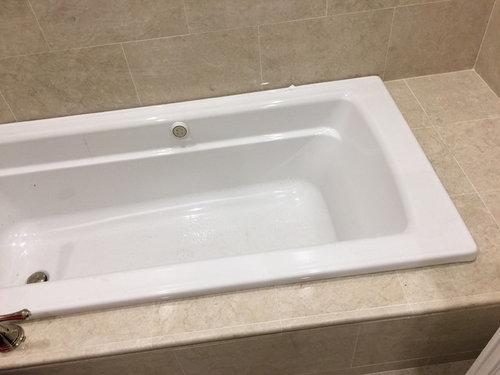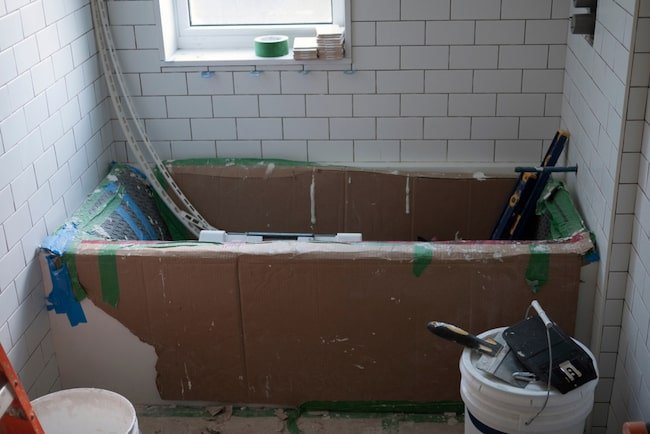Everybody will have their unique rationale about Tools You Need to Install a New Bathtub .

Mounting a bath tub isn't exactly brain surgery, but it does require solid plumbing, carpentry, as well as occasionally, tiling skills. Replacing an old bathtub with a brand-new one is also a moderately difficult job. If the old bathtub is conveniently accessible, the project can move immediately; if you have to open a wall to eliminate the old bathtub and also place the brand-new bath tub, the job is a lot harder. In either instance, the project is within a home handyman's skills, although you will require an assistant to vacate the old bathtub and also embeded in the brand-new one. Make sure you have qualified yourself for the job and are comfortable attempting it. Rather than working with a contractor to take over a halfway-completed task, it is far better to think about utilizing one before you begin. Chances are you may need a professional plumber to make tube links.
This write-up will certainly assist you set up a new tub in your shower room if you have already purchased a new tub and do not require to transform the setup of your previous water supply pipes.
Your devices as well as material list need to consist of the following:
Planning for the Setup
First of all, the supporting structure provided with the bath needs to be fitted (if needed) according to the producer's instructions. Next, fit the faucets or mixer to the bath tub. When suitable the tap block, it is essential to make sure that if the faucet includes a plastic washer, it is fitted in between the bathroom and the taps. On a plastic bathroom, it is likewise reasonable to fit a supporting plate under the taps device to avoid pressure on the tub.
Fit the flexible faucet adapters to the bottom of the two taps making use of 2 nuts as well as olives (sometimes supplied with the bathtub). Fit the plug-hole electrical outlet by smearing mastic filler round the sink outlet opening, and after that pass the outlet with the hole in the bath. Make use of the nut provided by the producer to fit the plug-hole. Check out the plug-hole electrical outlet for an inlet on the side for the overflow pipe.
Next off, fit the end of the flexible overflow pipeline to the overflow outlet. Afterwards, screw the pipe to the overflow face which need to be fitted inside the bath. Make sure you make use of all of the supplied washers.
Link the trap to the bottom of the waste electrical outlet on the bathtub by winding the string of the waste outlet with silicone mastic or PTFE tape, and also screw on the catch to the outlet. Attach the bottom of the overflow tube in a comparable manner.The bath must now prepare to be fitted in its last placement.
Removing Old Taps
If you require to replace old faucets with new ones as a part of your installment, then the first thing you should do is disconnect the water. After doing so, turn on the faucets to drain pipes any water staying in the system. The procedure of removing the existing taps can be fairly problematic because of the limited accessibility that is typically the case.
Utilize a container wrench (crowsfoot spanner) or a faucet tool to undo the nut that attaches the supply pipelines to the taps. Have a fabric all set for the remaining water that will come from the pipelines. As soon as the supply pipes have been eliminated, make use of the same tool to loosen the nut that holds the taps onto the bath/basin. You will require to stop the solitary faucets from transforming during this process. When the faucets have actually been removed, the holes in the bath/basin will have to be cleaned up of any kind of old securing substance.
Before proceeding to fit the new taps, compare the pipeline connections on the old faucets to the brand-new faucets. If the old faucets are longer than the brand-new faucets, after that a shank adapter is needed for the brand-new faucets to fit.
Mounting the Bathtub
Using the two wooden boards under its feet, put the tub in the needed setting. The wood boards are handy in equally spreading out the weight of the bathtub over the area of the boards instead of focusing all the weight onto four small points.
The next goal is to guarantee that the bathtub is leveled all round. This can be accomplished by inspecting the level and also readjusting the feet on the bath tub till the level reviews degree.
To mount faucets, fit all-time low of the outermost versatile faucet port to the proper supply pipe by making a compression sign up with; after that do the very same for the various other tap.
Turn on the supply of water and check all joints as well as new pipework for leaks and tighten them if needed. Fill the bathtub and additionally examine the overflow electrical outlet and also the typical outlet for leaks.
Finally, fix the bathroom paneling as explained in the maker's instruction manual. Tiling and sealing around the bath tub ought to wait until the bath tub has actually been utilized at least when as this will certainly settle it into its last placement.
Suitable New Taps
If the tails of the new faucets are plastic, after that you will need a plastic adapter to avoid damage to the string. One end of the adapter fits on the plastic tail of the tap and also the various other end gives a connection to the existent supply pipelines.
If you need to fit a monobloc, then you will call for reducing couplers, which attaches the 10mm pipeline of the monobloc to the typical 15mm supply pipe.
Next off, place the tap in the mounting opening in the bath/basin making certain that the washing machines are in place in between the tap and the sink. Secure the faucet in place with the manufacturer given backnut. When the tap is firmly in place, the supply pipelines can be linked to the tails of the taps. The faucets can either be linked by using corrugated copper piping or with normal faucet connectors. The former kind ought to be connected to the faucet finishes first, tightening up just by hand. The supply pipes can later on be connected to the various other end. Tighten both ends with a spanner after both ends have been linked.
Tiling Around the Tub
In the location where the bath meets the floor tile, it is needed to secure the joins with a silicone rubber caulking. This is necessary as the installation can move sufficient to crack an inflexible seal, triggering the water to pass through the wall in between the bath and the tiling, causing complications with moisture and possible leakages to the ceiling below.
You can pick from a variety of coloured sealers to blend in your components as well as fittings. They are offered in tubes and cartridges, and also are capable of securing gaps as much as a size of 3mm (1/8 inch). If you have a larger void to fill, you can load it with twists of soaked paper or soft rope. Keep in mind to constantly fill up the bathtub with water prior to securing, to allow for the activity experienced when the tub remains in usage. The sealant can split rather very early if you do not consider this motion prior to sealing.
Conversely, ceramic coving or quadrant tiles can be utilized to border the bath or shower tray. Plastic strips of coving, which are easy to use as well as reduce to dimension, are also quickly readily available on the marketplace. It is recommended to fit the floor tiles using water-resistant or water resistant glue and grout.
Bathtub Installation
How Important Is A Bathtub To Your Home?
High-quality baths, showers, and other bathroom updates are necessary when considering a smart investment in your home. It’s a room that you go to every day and one that is constantly being used by guests.The bathroom is one of the top trafficked rooms in a home and also one of the most valuable in terms of home resale.
Install Piping Before Tub
You will be using your existing drain and waste vent system, but pipes required include the hot and cold water supply lines and a pipe leading to a shower head. A mixing valve and shower head are also needed. Air chambers may be required.
Position the Tub
Lower the tub into place so that the continuous flange fits against the wall studs and rests on 1’x4' or 2’x4' supports. Anchor the tub to the enclosure with nails or screws inserted through the flanges into the studs.
NOTE: Remember, bathtubs and shower stalls may require support framing. A bathtub filled with water is extremely heavy, so check building codes and framing support before installing the tub.
Assemble Drain Connections
Assemble the bathtub drain connections by connecting the tub overflow with the tub drain above the trap, not beyond it. The trap will have a compression fitting that screws over the arm of the overflow assembly.
Place a Pipe For the Shower Head
First, locate a brass female threaded winged fitting and attach it to a framing support via a screw or a nail. Then run a pipe up the wall for the shower head. Sweat or solder the other side of the brass fitting to the top of the pipe.
Attaching Hot and Cold Water Lines
Attach your water lines for both hot and cold by sweating these directly into the hot and cold ports of the mixing valve. The mixing valve will be how water enters the tub’s system, not by the pipes themselves.
Install the Spout
Extend a piece of 1/2 inch pipe, or whichever length is specified in the manufacturer’s instructions, for the tub spout. Sweat on a male threaded fitting at the end of the pipe or use a brass nipple of the proper length and a 1/2 inch cap.
NOTE: At this point you should have your rough-in plumbing work inspected before proceeding further.
Check For Leaks
Restore the water pressure and check the drain connection and the supply pipes for any sign of leaking.
estore the Bathroom Wall
Replace the wall with moisture-resistant drywall as a base for your wall covering. Seal the joints between the wall and your new tub with silicone caulk as protection against water seepage.
https://www.berkeys.com/2016/12/02/bathtub-installation-dallas/

I have been very occupied with Installing A Bathtub and I'm hoping you enjoyed reading my post. Enjoyed our blog posting? Please share it. Let others locate it. We love reading our article about Tools You Need to Install a New Bathtub .
Schedule An Appointment